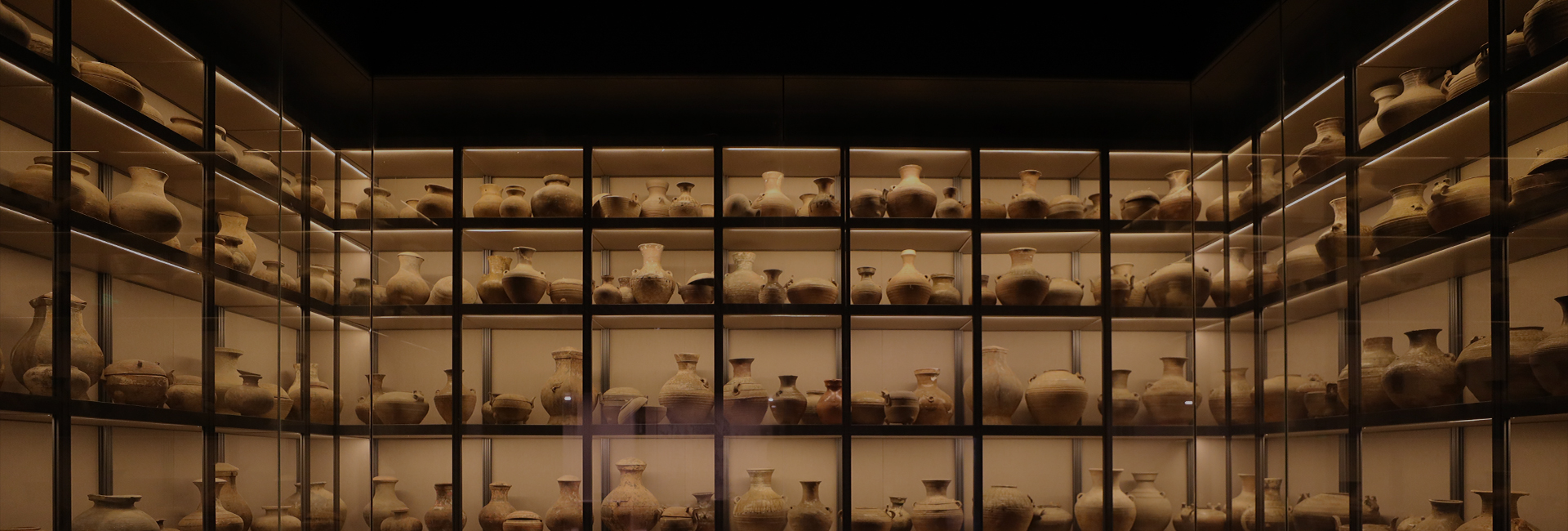

Xuzhou Han Culture Academic
Submit
【XU BO】Maximum daily capacity: 10,000 person-times Instantaneous capacity: 2,500 person-times

◇ Exhibition time:Permanent exhibition
◇ Exhibition venue:Xuzhou Museum 2F
The farming economy is the economic foundation of the feudal society. Xuzhou has laid a good foundation for the prosperity of all industries because of its comprehensive advantages of geographical convenience and diligence.
During the Han Dynasty, Xuzhou had stable agriculture, prosperous commerce and a complete range of handicrafts. The traditional ceramic and textile industries were further developed and prospered, especially the industries of quarrying, jade making, iron smelting and copper casting. It was a prosperous commercial city at that time. According to historical records, during the reign of Emperor Ping of the Western Han Dynasty, there were 110000 households and 500000 people in the State of Chu. During the reign of Emperor Shun of the Eastern Han Dynasty, there were 90000 households and 490000 people in Pengcheng, which was one of the most densely populated areas at that time.
Part I Kiln fire and ceramic smoke
According to the different firing process and firing temperature, the Han Dynasty pottery unearthed in Xuzhou area includes primitive porcelain, glazed pottery, lacquered pottery and ordinary argillaceous grey or red pottery.
The original porcelain has a fine body, less impurities, glaze on the surface, and high firing temperature. It began to flourish and widely appeared in the early Western Han Dynasty, and gradually declined in the late Western Han Dynasty. There are many impurities in the body material of glazed pottery. The body is mostly red. Glaze is applied on the surface of the pottery. The firing temperature is low, and the glaze is easy to peel off. Glazed pottery in Xuzhou appeared in the late Western Han Dynasty, and became increasingly popular in the Eastern Han Dynasty. The number of ordinary grey pottery is the largest, and some of the surface of the pottery is painted pottery with painted patterns. Lacquered pottery is rarely found, all of which are pottery body lacquerware with rich patterns.
Part II People's Good Farming and Mulberry
During the Han Dynasty, the grain production, mulberry and hemp cultivation and vegetable and fruit cultivation in Xuzhou reached a very high level, and the "Xuzhou Animal Husbandry Proverbs" has the reputation of "people are good at farming and mulberry, and the wild is healthy". On this basis, the livestock breeding industry such as horses, cattle, sheep, pigs, chickens and dogs, as well as the textile, brewing, weaving and other industries engaged in the processing of agricultural and sideline products have also been greatly developed.
Among the unearthed cultural relics, warehouses, stoves, wells, mills, pig pens in various forms, colorful pavilions, charmingly naive pottery animals and other cultural relics with a strong sense of life have emerged in large numbers, fully demonstrating the prosperity and prosperity of Xuzhou in the Han Dynasty "crowing chickens and barking dogs, fireworks and thousands of miles".
Part III Eating in the morning and drinking in the evening
Xuzhou has a long culinary tradition since the era of Peng Zu. By the Han Dynasty, the catering culture gradually formed a certain system and characteristics. A large number of archaeological data show that during the Han Dynasty, the ancestors of Xuzhou region took rice, wheat, millet, millet, sorghum and other staple foods, meat foods such as pigs, cattle, sheep, chicken, ducks and aquatic products such as fish and crabs were widely popular, and various kinds of fruits such as dates, plums, peaches, plums, and sour dates were also popular. Kettles, steamers, stoves, cauldrons, pots, pots, pots, cups, dyeing stoves, ear cups and other cooking utensils and utensils have been found more frequently. In the Han Dynasty stone reliefs in Xuzhou, the banquet and cooking pictures fully reflect the rich and colorful food culture at that time with their vivid picture content.
Part IV Qianlei Shangtong
As the political and economic center of the State of Chu (Pengcheng State) in the Han Dynasty, Pengcheng, with its developed land and water transportation, promoted the great prosperity of commerce and trade. During the Western Han Dynasty, a large number of grains from Shandong and Jianghuai regions were transported to the capital Chang'an through Pengcheng every year, and commodities from all over the country also gathered in Pengcheng. Money is the intermediary of commodity circulation. There are many kinds of coins unearthed in Xuzhou. In terms of quantity, there are more than 176000 coins unearthed from the tomb of King Chu at Shizishan, 207 kg coins unearthed from the tomb of King Chu at Beidongshan, and 1.5 tons coins unearthed from the coin cellar at Datong Street; In terms of types, the coins of the Han Dynasty in Xuzhou basically cover all kinds of coins issued by the Han Dynasty. In addition, Qian Fan also found many things.
Part V Smelting Rich with Iron
During the reign of Emperor Wu of the Western Han Dynasty, the salt and iron official camp was implemented, and the iron smelting industry in Xuzhou was developed, with Pengcheng Iron Official, Xiapi Iron Official, Peijun Iron Official and other special officials for management. Two large mining sites were found at the iron smelting site of the Han Dynasty in Liguo Town, Tongshan District. There are many iron wares unearthed in Xuzhou, mainly agricultural implements, production tools and daily utensils. Scientific and technological tests show that the iron wares have used cold forging, carburizing, quenching, folding forging and other processes. A number of iron containers, including cauldrons, tripods, ovens, pots, etc., were unearthed in the cluster burial pits of Queen Chu's tomb at Shizishan. They are large and well preserved, and are rare iron treasures of the Han Dynasty.